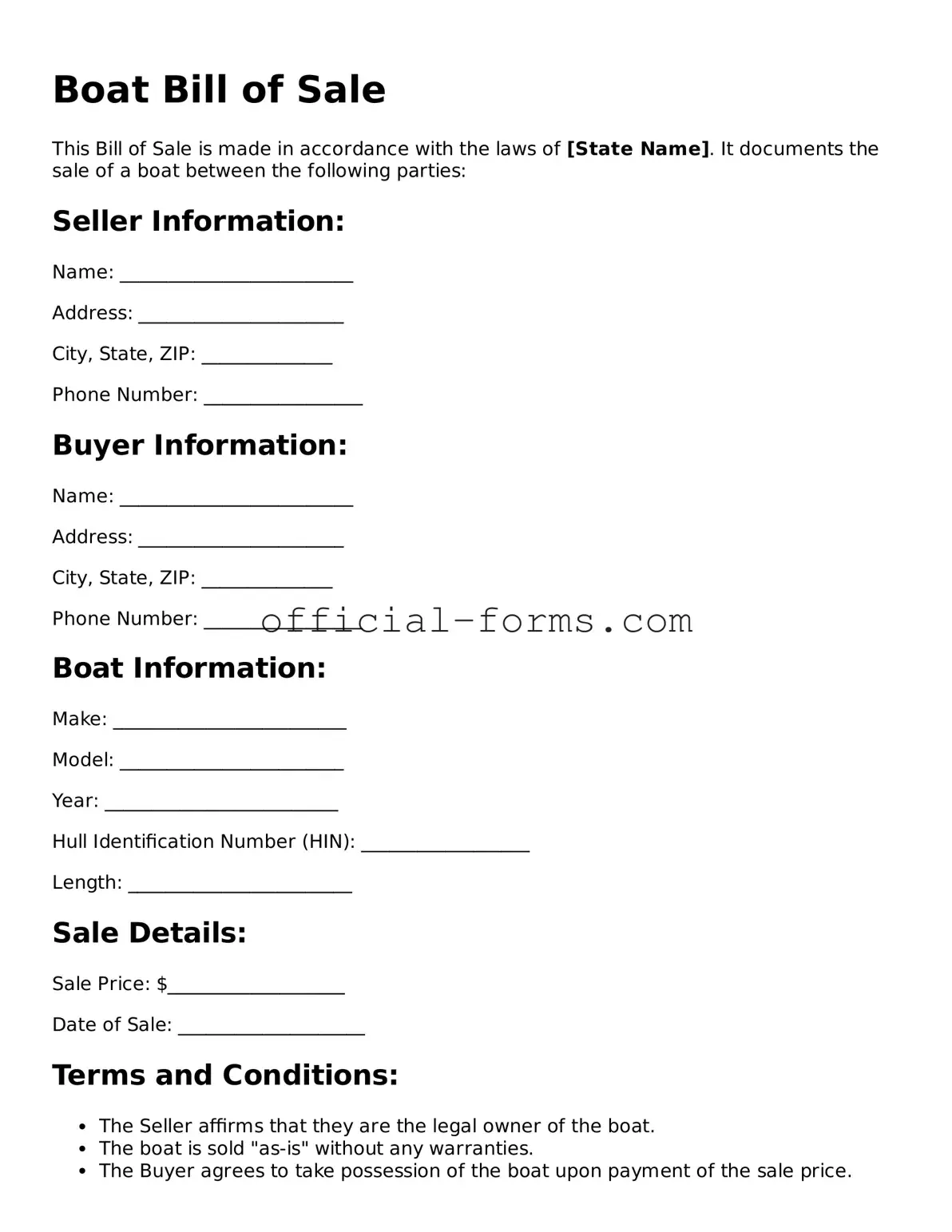Filling out a Boat Bill of Sale form is an important step in the process of buying or selling a boat. However, many people make mistakes that can lead to confusion or legal issues down the line. One common error is not providing accurate information about the boat. It's essential to include the correct make, model, year, and identification number. Missing or incorrect details can create problems when registering the boat or when verifying ownership.
Another mistake involves the seller not signing the document. A signature is crucial as it signifies that the seller agrees to the terms of the sale. Without it, the document may not hold up in a dispute. Similarly, buyers sometimes forget to sign the form as well. Both parties need to sign to make the sale official and binding.
Many people overlook the importance of including the sale price. Leaving this section blank can lead to misunderstandings later. The sale price serves as a record of the transaction and may be necessary for tax purposes. Additionally, some individuals fail to provide the date of the sale. This date is important for establishing when ownership officially changes hands.
Another frequent oversight is not including any additional terms or conditions of the sale. If there are specific agreements between the buyer and seller, such as included equipment or warranties, these should be clearly stated in the Bill of Sale. Omitting this information can lead to disputes about what was included in the sale.
Buyers sometimes neglect to check the boat’s title status before completing the sale. Ensuring that the title is clear and free of liens is vital. If the title has issues, it could affect the buyer’s ability to register the boat later. Furthermore, some sellers fail to provide a copy of the title with the Bill of Sale. This document is necessary for the buyer to prove ownership and register the boat in their name.
Another common mistake is not keeping a copy of the completed Bill of Sale. Both parties should retain a copy for their records. This document serves as proof of the transaction and can be useful if any issues arise in the future. Finally, individuals sometimes ignore the importance of having witnesses or notarization. While not always required, having a witness or notary can add an extra layer of protection and legitimacy to the transaction.
In summary, being thorough and careful when filling out a Boat Bill of Sale form can help prevent problems later on. By avoiding these common mistakes, both buyers and sellers can ensure a smoother transaction and protect their interests.
